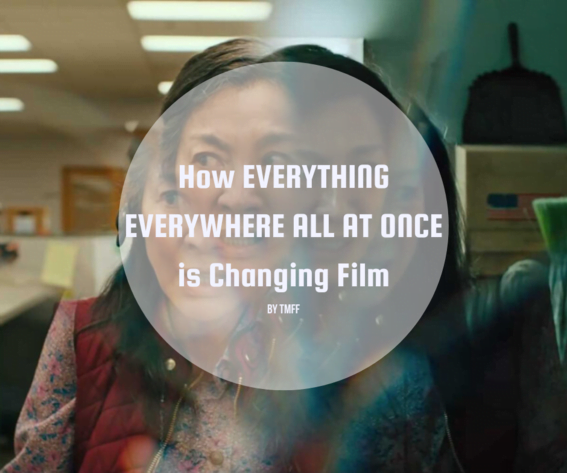If you talk to any self-proclaimed film buff from Generation Z about their favorite films, they will likely list at least one film from A24. The independent entertainment company has released countless acclaimed films since its inception in 2012, with its latest acclaimed work being Everything Everywhere All At Once.
Written and directed by Daniel Kwan and Daniel Scheinert (the Daniels), the absurdist comedy is quickly becoming a classic, having made over $100 million at the box office against a $25 million budget, on top of incredibly high Letterboxd, Rotten Tomatoes, Metacritic, and IMDb ratings.
Now with it being a few months since its release, it’s safe to say Everything Everywhere All At Once will leave a lasting impact and impression on cinema. From its dialogue to fast editing to its unpredictable story, Everything Everywhere All At Once is a modern masterpiece that we can learn a lot from.
The Scope of Editing
From a filmmaking perspective, the film has many strengths, with its editing and the sheer number of shots being its most impressive feat (in my opinion). The countless scene changes, shots, and fast editing make it overwhelming in a sense. Hence why its name fits the film so well.
The editing is so chaotic that you could laugh, cry, and be scared within a minute. Its foundation doesn’t take long to develop, allowing the audience to know the film’s style quickly. Before you know it, you’re an hour in a fast-paced, chaotic piece that evokes every possible emotion.
It’s a delicate balance because the film could’ve easily been overwhelmed without the scope of editing and writing. We experience the funny parts, sad parts, and action parts without any of them overlapping one another. Nothing changes a scene’s tone or message, allowing the tension or message to continue.
A Successful Medium Budget Film
From a non-filmmaking perspective, Everything Everywhere All At Once is a perfect example of why there need to be more medium-budget films today. Nowadays, a film is either big-budget with a $100 million-plus budget (Marvel, Star Wars, etc.) or is on the indie side, being a few million or under.
A24 is undoubtedly more popular than a typical Indie Studio, but even with that, its budgets are nowhere near as massive as any new Marvel film. Before Everything Everywhere All At Once, A24’s biggest budget was 2021’s The Green Knight at $15 million. Now with a $25 million film in Everything Everywhere All At Once, could this be a sign of more medium-budget films?
Taking Risks
The medium-budget film died for many reasons. DVD sales aren’t how they once were, meaning a studio won’t take a risk on a bigger budget unless it’s guaranteed to make money back and then some. Look at any recent film with a bigger budget that wasn’t a Marvel or Star Wars film (The Northman, The Last Duel, West Side Story, etc.). They’ve all lost money.
Besides DVD sales, people aren’t going to a theater as they once were unless it’s a massive spectacle or a big-budget attraction. Hence, studios are either producing smaller budget films that aren’t as big of a risk, or massive entities are creating $250 million blockbusters guaranteed to make billions.
It’s easy for these massive entities to spend $250 million to make $1 billion compared to spending $30 million to, at best, only make $40 million at the box office. Though it has the luxury of its following, A24 decided to risk itself with Everything Everywhere All At Once, even knowing it’d probably be a great film.
It’s the point that a great film doesn’t necessarily relay a successful film. Now with Everything Everywhere All At Once making well over what anyone could’ve predicted, could this mean more medium-budget films? Furthermore, could we see studios invest bigger budgets in whackier R-rated films that don’t seem mainstream on paper? Time will tell, but for now, we have the film to appreciate.










Leave a reply